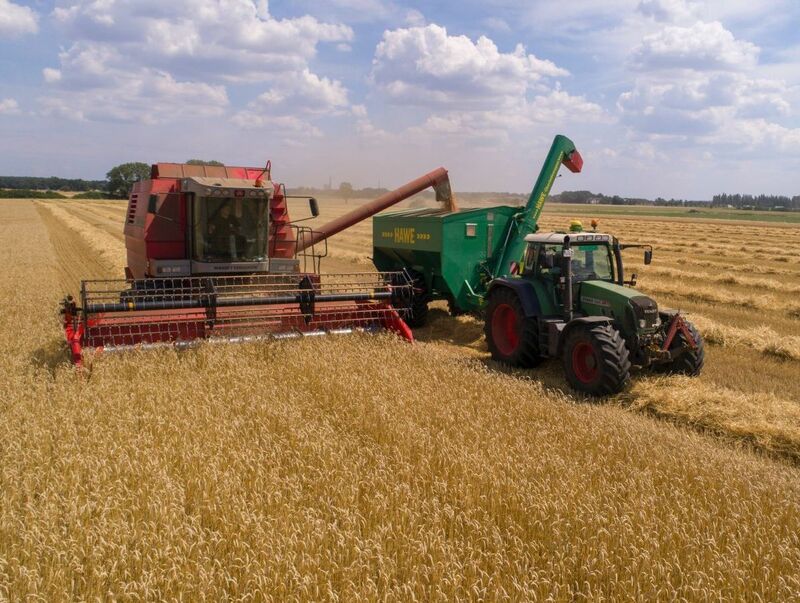
The grain and oilseed sector of the commodities market declined by 13.04% in 2023. After a 7.56% decline in Q1, grains and oilseeds fell another 4.86% in Q2 2024 and were 12.06% lower through the first half of 2024. The sector led the commodities asset class on the downside as the price corrections from the 2022 highs continued.
Corn declined in Q2 and since the end of 2024
Corn on the Chicago Mercantile Exchange’s CBOT division moved 10.12% lower in Q2 2024 and were 15.70% below the 2023 closing price at the end of June.

The twenty-year continuous corn futures chart shows the decline from the 2022 $8.27 per bushel high that came within 16.75 cents of the August 2012 record $8.4375 peak. Nearby corn futures closed Q2 just below the $4 per bushel level at $3.9725.
Meanwhile, corn is the primary ingredient in ethanol production. Chicago ethanol swaps posted a 19.76% rally in Q2 and were 17.61% higher over the first half of 2024. Ethanol moved higher with recoveries in crude oil and gasoline futures markets that posted double-digit percentage gains over the first six months of 2024.
Soybeans fell while meal and oil moved in opposite directions in Q2
CBOT soybean futures moved 3.44% lower in Q2 and were 11.07% below the end of 2023 closing price as Q2 ended last week.

The twenty-year soybean futures chart shows the plunge from the June 2022 $17.84 high, which was only 10.75 cents under the September 2012 $17.9475 all-time high. Nearby soybean futures closed Q2 at $11.5050 per bushel.
Processors crush soybeans into soybean meal and oil. Meal is a critical ingredient in animal feeds, and oil is crucial for cooking oils and biodiesel production. Meal futures prices rose 6.75% in Q2 but were down 6.61% since the end of 2023. Soybean oil declined 8,72% in Q2 and was 8.51% lower from the end of December 2023 through the end of June 2024.
Wheat prices mostly corrected lower
Wheat is the primary ingredient in the bread that feeds the world. The most liquid wheat futures contract trades on the CME’s CBOT division as soft red winter wheat. CBOT wheat edged 1.20% lower in Q2 and was down 11.86% since the end of 2023.

The continuous CBOT wheat futures contract highlights the rise to a record $14.2525 high in March 2022 and the decline over the past two and one-quarter years. CBOT soft red winter wheat futures closed Q2 at $5.5350 per bushel.
Meanwhile, KCBT hard red winter wheat futures moved 0.38% higher in Q2 and were 8.49% lower over the first half of 2024. MGE spring wheat futures fell 4.96% in Q2 and 15.24% over the first six months of this year. KCBT and MGE wheat futures settled at $5.8750 and $6.13 per bushel, respectively, at the end of Q2 2024.
Oats declined while rice prices moved higher in Q2
While soybeans, corn, and wheat futures are highly liquid agricultural futures markets, oats, and rough rice suffer from limited liquidity.
Oat futures posted a 13.24% decline in Q2 and were 19.70% lower over the first two quarters of 2024. Oats settled at the $3.0975 per bushel level at the end of June 2024.
Rough rose futures rose 3.70% in Q2 and were down 1.96% over the first six months of 2024. Rough rice settled at the 16.965 per hundredweight level at the end of Q2 2024.
The outlook for grain and oilseeds for the second half of 2024
Grain and oilseed prices have declined steadily since the 2022 highs. The recent USDA World Agricultural Supply and Demand Estimates Reports have forecast that production and inventories are sufficient to meet the world’s growing demand. However, the low price levels could lead to periodic rallies for the following reasons:
- The weather over the Northern Hemisphere growing season is the most significant factor in determining prices’ path of least resistance. Floods or droughts could reduce production, leading to higher prices this summer.
- Ukraine and Russia are leading exporters of wheat and other grains. The ongoing war could impact production. Moreover, the Black Sea Port region is a critical export hub. The war could cause delays or problems shipping agricultural products from Europe’s breadbasket, leading to higher prices.
- Inflation and global trade issues have increased fertilizer, equipment, and other production costs. Market prices must keep pace with rising input prices.
- The world’s population continues to grow; each year, there are more mouths to feed. Production must keep pace with the rising demand.
Grain and oilseed prices have declined to levels where crop issues could cause sudden rallies. It is impossible to pick bottoms in any market, as bearish trends can take prices to illogical, unreasonable, and irrational levels. However, the technical price resistance levels have declined with prices since the 2022 highs. The lower prices fall, the higher the odds of sudden recovery rallies, as we witnessed in CBOT wheat futures in Q2, which took prices to over $7 per bushel before correcting. The bottom line is that grain and oilseed markets offer value at current price levels, which will only increase at lower levels over the coming weeks and months.
On the date of publication, Andrew Hecht did not have (either directly or indirectly) positions in any of the securities mentioned in this article. All information and data in this article is solely for informational purposes. For more information please view the Barchart Disclosure Policy here.






